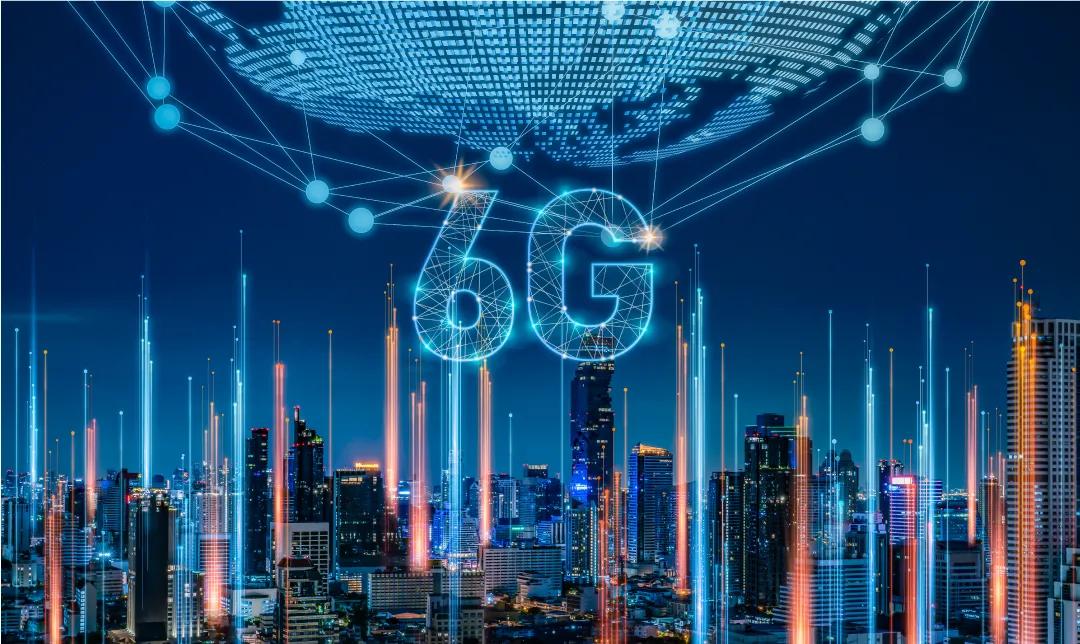Blockchain + 6G IoT
Introduction
The technological landscape is ever-evolving as we move toward the future. Two promising technologies, blockchain and 6G-enabled Internet of Things (IoT), are set to redefine how we interact with the digital realm. This study by Sunway University's Dr Saad Aslam and colleagues explores the fusion of blockchain and 6G-enabled IoT, showcasing its potential in various sectors, from smart cities to intelligent manufacturing.
What is Blockchain?
Blockchain is a decentralised digital currency network secured through cryptographic techniques and operates on a peer-to-peer basis. The core of this technology lies in its use of a distributed ledger, where transactions are meticulously recorded as timestamped blocks, interconnected through cryptographic hashes, creating an immutable and unalterable chain of information. Transactions are verified using proof of work (PoW) as a consensus algorithm, ensuring the reliability and validity of new blocks added to the chain. The blockchain system ensures integrity, immutability, transparency, non-repudiation, and equal rights for every participant involved. The immutability characteristic ensures that data stored on the blockchain cannot be altered.
Unleashing the Power of IoT with Blockchain
Smart IoT: Challenges and Opportunities
The rapid development of IoT services and innovative applications has led to a surge in interconnected devices, creating seamless interactions and vast data sharing in networks. However, the existing centralised cloud-based platforms have drawbacks, including data privacy concerns, security vulnerabilities, and the risk of a single point of failure. These challenges call for a more robust and decentralised solution.
Blockchain: Empowering IoT
Blockchain technology is a game-changer for IoT systems. Blockchain's decentralised and transparent nature allows each IoT device an equal right to control and authorise data, ensuring data privacy, immutability, and reliability. It eliminates the need for intermediaries, providing security and autonomy to IoT participants. Blockchain also enables innovative contract-based transactions, simplifying e-commerce and supply chain management.
6G: The Next Frontier
As we transition to the sixth generation (6G) of mobile communication technology, we anticipate unprecedented connectivity, ultra-low latency, and massive data handling capabilities. This technological leap opens exciting possibilities for IoT but also presents challenges like high variability in network traffic and energy consumption.
Integrating blockchain into future 6G-IoT networks might increase latency and energy consumption costs. The mining process and extensive information exchange required for blockchain integration could lead to excessive network delays and energy usage. Consequently, careful consideration of operational expenses becomes crucial when deploying blockchain technology in upcoming IoT networks.
A Synergy for the Future: Blockchain Meets 6G-Enabled IoT
Enhancing Security and Privacy
Combining blockchain and 6G-enabled IoT creates a more secure and private ecosystem. Blockchain's distributed ledger ensures all transactions are verified by network participants, reducing the risk of data breaches. With blockchain's encryption and decentralised storage, sensitive IoT data remains protected, building trust between IoT devices and users.
Scalability and Reliability
Traditional centralised systems struggle to handle the sheer volume of IoT devices, leading to performance issues. Blockchain's decentralised structure offers scalability, enabling seamless integration of new devices and applications. The immutability of blockchain ensures data integrity and reliability, which is crucial for critical IoT applications, including healthcare and intelligent grids.
Autonomous Decision-Making
The convergence of blockchain and 6G-enabled IoT paves the way for autonomous decision-making. With smart contracts on the blockchain, devices can execute predefined rules and conditions independently, reducing the need for human intervention. This autonomy enhances efficiency and responsiveness in various sectors, from manufacturing to intelligent transportation.
The Interplay of Renewable Energy Engineering, Blockchain, and 6G IoT
The incorporation of renewable energy into Blockchain and 6G IoT domains carries profound importance and is characterised by sustainability. This collaboration not only strengthens environmentally conscious practices but also directs the optimisation of energy networks. Further, it should be noted that 6G IoT enhances renewable energy systems' precision by monitoring usage patterns and weather conditions. Blockchain and 6G IoT can work in tandem to address data security and preserve the trustworthiness of renewable energy systems. Lastly, the 6G IoT and blockchain merger can help in energy auditing, aiding regulatory compliance.
Applications in the Real World
Empowering Smart Cities
Blockchain and 6G-enabled IoT synergise to create more intelligent, more efficient cities. Citizens can experience streamlined services like smart lighting, surveillance, and parking through secure and interconnected devices. Combining blockchain's data integrity and 6G's low latency ensures real-time responsiveness, transforming urban living. The essence of an intelligent city is rooted in aggregating data from various IoT devices with heterogeneous capabilities.
Revolutionizing Manufacturing
The manufacturing industry can benefit immensely from blockchain and 6G-enabled IoT. Smart contracts enable autonomous maintenance, diagnostics, and supply chain management, optimising production processes. Blockchain's decentralised data storage ensures enhanced security and traceability, reducing the risk of counterfeits and improving customer trust.
Healthcare for the Future
In the realm of healthcare, the integration of blockchain and 6G-enabled IoT brings a new level of trust and data integrity. Patients' health data can be securely verified using smart contracts, eliminating the need for third-party intermediaries. This streamlined process ensures faster and more accurate diagnoses, enhancing patient care.
Challenges and Opportunities
Energy Consumption and Latency
Despite the numerous advantages, blockchain integration in 6G-enabled IoT may increase energy consumption due to computational complexity. Innovations in energy-efficient algorithms and hardware optimisations are essential to overcome this challenge.
Operational Expenses and Scalability
Managing high variability in network traffic requires careful capacity planning and resource allocation. Blockchain's implementation might add operational expenses, demanding cost-effective solutions while ensuring seamless scalability.
Conclusion
The merger of blockchain and 6G-enabled IoT marks a significant milestone in technological advancement. Overcoming challenges like energy consumption and scalability will unlock the full potential of this transformative duo, propelling us toward a connected, secure, and autonomous digital era.
Dr. Saad Aslam
School of Engineering and Technology.
Email: @email
This article has been adapted from Houshyar Honar Pajooh, Serge Demidenko, Saad Aslam & Muhammad Harris (2022), Blockchain and 6G-Enabled IoT, DOI: 10.3390/inventions7040109




